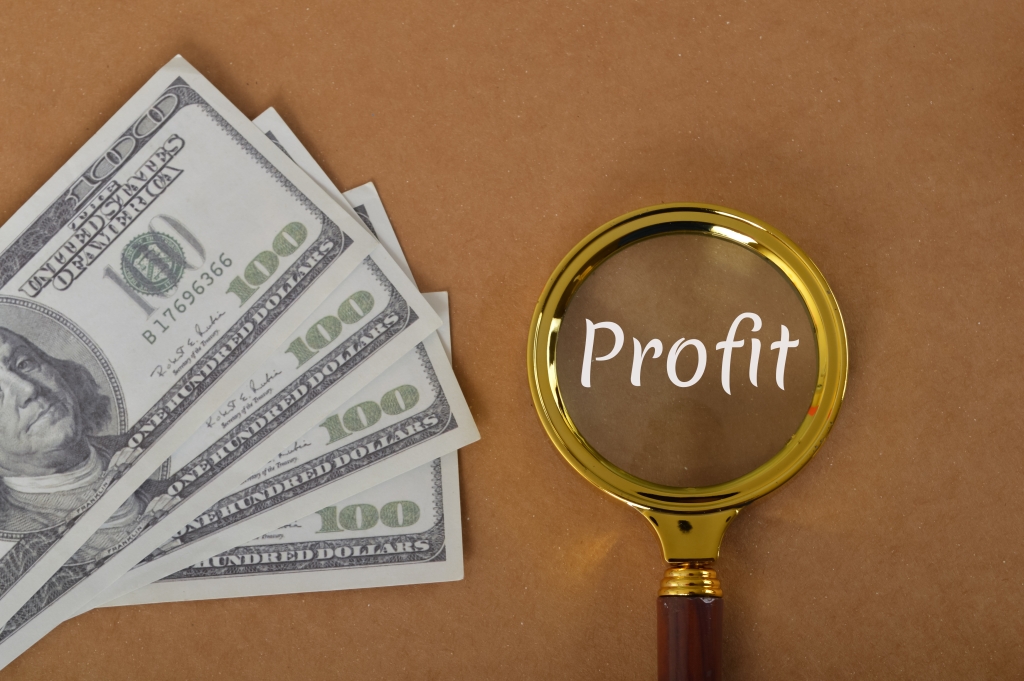What is Return on Ad Expend (ROAS)?
ROAS (return-on-ad spend) is a measure that measures how much revenue you’ve generated for every dollar spent on an advertising campaign. Let’s take an example: You make $10 for every $1 you spend on an advertising campaign. This would mean that your ROAS for this campaign is 10 to 1.
Ad spending is ultimately used to determine an ad campaign’s effectiveness, not your overall ROI. More details are below.
You will likely also measure ROAS and other metrics like click-through rates and ROI. You’ll see more of your results by measuring multiple metrics.
Tracking analytics and measuring performance are essential parts of any marketing campaign.
What is ROAS?
Return on Ad Spend (ROAS), a marketing metric, is used to evaluate the financial return and performance of a digital advertising strategy campaign or ad group. This metric can be used to improve a company’s ad strategies as well as its monetary returns.
You can track performance and improve your marketing strategies. Data is the best way to prove your department generates revenue. This is extremely important.
It is important to remember that quantitative data does not measure everything. It isn’t easy to calculate brand awareness or sentiment. You can also calculate downloads and email sign-ups but they might not always translate into revenue.
It is important to review both qualitative and quantitative contexts when analyzing any data.
Today we will be looking at ROAS in particular. Let’s first look at how ROAS differs from ROI.
Definition of ROAS: The return on ad spending (ROAS), is a marketing metric that measures the revenue generated for each dollar spent on advertising. The following formula can be used to calculate ROAS: Revenue Attributed To Ad Spend / Advertising costs.
Continue reading to find out more about ROAS. You can learn more about ROAS here.
ROAS Calculator
You want to decrease ad spending and increase your ROAS. 702 Pros can help.
Our digital advertising services offer decades of experience that can help you reduce wasted ad spending, increase ad performance by up to 20%, and maximize ROAS. Call us to learn more!
How to calculate ROAS
 Calculate ROAS
Calculate ROASTo calculate your ROAS, use the ROAS formula. This divides your total revenue from your ad strategy by its total costs.
ROAS = Revenue/Cost
This formula will allow your team to determine your unique ROAS value.
- Your ad strategy generated total revenue in a dollar amount
- The Total Cost (in dollars) for managing your ad strategies
You can now divide your total revenue and cost by the two data points.
Your ROAS, expressed in dollars, represents the return your company gets for every dollar you spend on an ad campaign. For example, if your ROAS equals $5, it would indicate that your business earns $5 per $1.
Get your ROAS now with our ROAS calculator
What should the ROAS cost?
These costs should be included in the calculation of ROAS
- Spend money on advertising
- Software or tools for advertising
- Advertising management fees are similar to those paid to an agency or consultant.
- Partner or vendor costs
- Affiliate commissions or fees
You might be able to exclude certain costs depending on the business. A company might, for example, exclude salaries from its ROAS formula.
[Example] How to Use the ROAS Formula
Look at the example below to get an idea of how to calculate your ROAS.
Acme Industries promotes its widgets through social media campaigns and paid searches. The company is currently trying to calculate the monthly return on its paid search efforts.
The ROAS formula will calculate the revenue and costs of paid search campaigns.
The team adds up its expenses and determines the following monthly costs:
- Ad Spend: $2500
- Software: $100
- Management fees of $800
- Total cost $3400
Acme Industries must calculate the revenue from its paid-search campaigns.
Acme Industries must consider several factors when estimating ad revenues.
They must first determine the value of a lead to their business.
They must also calculate the profit margin for each purchase.
Once they have done that, they can calculate the ad revenue.
Acme Industries has come up with the following results:
- 8 new leads (at 500 per lead): 4000
- 3 new Product A purchases (at $250 per purchase).$750
- 1 new product purchase of Product B (at $450/purchase): $450
- Total Ad Revenue: $5200
Acme Industries can now input all data into the ROAS formula.
ROAS = Total revenue / Total cost
ROAS = $3400 / $5200
ROAS = 1.50
Acme Industries’ paid search campaigns average $1.50 per $1. Is Acme Industries able to generate a high ROAS through its ad strategy? You might be wondering. You should; it’s a good thing!
It is crucial to understand whether your return on advertising spend is good, bad, or average. This helps you and your colleagues establish a benchmark for your advertising strategies. It also allows you to determine if there are ways your company can improve its performance.
How to calculate your break-even ROAS
The break-even ROAS is the amount your ad must make to pay its costs. If you are starting with online advertising, it is beneficial to calculate your break-even ROAS to determine your ROAS to make a profit.
You will need to calculate your break-even ROAS before calculating your average profit margin percentage. This formula will calculate your average profit margin.
Average Margin= Average Value Orders – Average Costs
This formula can be used to calculate your average profit margin percentage:
Average Profit Margin = (Average profit margin / Average order value) X 100
This formula will allow you to calculate your break-even ROAS.
Breakeven ROAS=1 / Average Profit Margin%
Let’s use an example profit margin of 60 percent to illustrate the formula. This means that 1/60% equals 167%. This means that you will break even at 167% ROAS. Your ROAS should not be below this level. This will mean that you are losing money on your advertisement.
What makes a good ROAS?
 Profit Margins
Profit Margins A “good” ROAS depends on many factors, including profit margins and industry. Companies aim to achieve a ratio of 4:1 — 4 in revenue to 1 in ad expenses. However, the average ROAS is 2:2 — $2 in revenues to $1 in ad expenses. Many strategies can help increase your ROAS.
93% of 702 Pros customers are delighted with digital marketing results.
702 Pros is very strategic and well-organized. Our partnership is only one year old, and we have already met all our expectations.
What is a “good” ROAS score?
These are the things you should consider when determining a company’s ROAS.
- Your industry
- Profit margins
- Your average cost-per-click (CPC)
These details will help you determine the best dollar amount for your company.
View Average Google Ads ROAS By Industry
Depending on the medium used, the return on advertising spend can range from $4-11 per dollar.
The graphic below shows the ROAS per dollar of investment in the United States for 2018 as a function of the medium.
U.S. advertisers earned approximately 11 dollars for every dollar they invested in digital advertising. This makes it the medium with the highest return on advertising investment.
How to increase ROAS
You can reduce ad spending and review your campaigns to improve your ROAS. Optimize your landing pages and rethink negative keywords.
ROAS is an important metric that you should track but not in isolation. You must look at other metrics and data to get a complete picture of your investment return.
ROAS is important for your business.
For a few reasons, your ROAS should be important to you and your company:
- Analyze the performance and financial returns of your ad campaigns
- You can get accurate data to support ad spending increases and campaign budget changes.
- Determine which ad campaigns, groups, and ads are most effective and profitable.
- To measure your ads against future calculations, obtain a benchmark average
- More
Calculating your ROAS provides information to your company and team about the quality and performance of your ad campaigns. This provides actionable, insightful data that can be used to optimize your advertising spend. It is easy to lose your advertising budget and reduce the number of sales and leads you to receive by skipping the formula.
How Does ROAS differ from ROI?
It’s natural to wonder how ROAS differs from ROI when discussing ROAS.
ROI is the return on investment your company receives from advertising or other channels after subtracting expenses such as operational costs and turnover. ROAS, however, measures how much your company makes from advertising alone.
ROAS and ROI use different formulae to measure different aspects of your campaign.
| ROAS FORMULA | ROI FORMULA |
| ROA = Revenue/Cost | ROI = Net Profit/Total Investment*100 |
You might find it challenging to understand the differences between ROI and ROAS. Here’s a way to look at them. ROAS is your average return on advertising, while ROI is your total return on advertising.
Three ways your company can improve its ROAS by 10x
You want to increase your ROAS, just like your competitors, to maximize your ads’ performance.
These three strategies can help you improve your ads and increase your return on your ad spending.
1. Start a PPC campaign with your brand
Your business can get a higher return on its advertising investment by running branded PPC campaigns that target your company name. Conversions are often generated by branded searches because people searching for a company name want to buy or contact them.
2. Use negative keywords
 Use Negative Keywords
Use Negative KeywordsNegative Keywords can also help improve your ROAS.
Negative keywords will prevent your ads from appearing on searches that include those keywords. These keywords are similar to your targeted ones but can be outside the business’s scope.
These negative keywords can be added to several job ads for your company.
- Careers
- Resumes
- Openings for Jobs
Look at your ads and find negative keywords.
3. Optimize landing pages to increase speed, usability, and conversion
Your landing pages can make a huge difference in your ad performance. Campaigns with slow loading and unfriendly landing pages can result in lost leads and sales.
You need landing pages that are reliable, easy to use, and fast if you want people to buy your products or contact you. These tasks can be done in-house, but you will need a web developer and designer.
You can get a quick, lasting fix with landing pages or page speed optimization.
Have a ROAS in red? 702 Pros offers professional assistance
No business, regardless of size, can afford to have a ROAS in red. If your ads don’t generate the revenue or results in your business needs, it puts your company (and yourself) in a tough spot.
702 Pros offers professional ad management services that can remove the stress and worry from your ad campaigns and deliver the desired results and revenue.
Contact us online to learn more about our paid advertising services from search to social to help your company earn a remarkable return on ad spending. Or call us at 888-601-55359 to speak with a strategist about you goals, company, or anything else!
Many marketers can relate to this because, as a group, we tend be better at English and History than math or science.
Marketers need to be able analyze data and calculate the effectiveness of campaigns or articles, even though math may not be their forte.
We need to calculate and track return on ad spending (ROAS) as one of our metrics.
Let’s take a look at ROAS. This post will explain what ROAS is and how it differs from ROI. It also explains how to calculate it.
ROAS vs. ROI
Return on investment (ROI), which measures an investment’s total return, calculates only your return for a particular ad campaign. ROAS measures the success of an ad campaign, while ROI is a more general metric.
This means that advertising is the only cost included in an ROAS calculation. However, an ROI calculation will consider the entire cost of a campaign or project.
Your ads campaign’s goal is to maximize your return on your advertising spend. How can you decide what your ad spend should look like?
ROAS would guide you in deciding how much advertising money you should spend and indicate if your campaigns have been successful. This will let you know if you need to reevaluate your approach to advertising.
You might now be asking, “How do I calculate ROAS?” Let’s take a look at that.
How to Calculate ROAS
To calculate ROAS, the equation is as simple as Revenue generated by Ads / Costs of Ads. This equation will give you a ratio that can be used to determine if your ad campaign has been successful. If you earned $10 per $1, your ROAS would equal 10:1.
Although the equation is straightforward, it can be difficult to gather the necessary data. It can be difficult to calculate the cost of an advertisement. Consider the cost of your ad, labor costs for creating the creative assets, vendor cost, affiliate commissions, and the cost of the ad.
To get an accurate ROAS measurement, it is important to have an accurate estimate of how much money was spent on each ad. Your findings will not be accurate if your data aren’t correct.
Also, if your ecommerce company is not yet up and running, it may be hard to track the revenue generated from an ad. A person might click on your ad and download an ebook. However, they may not have spent any money yet. They might not even spend money for several months.
A CRM and Ads software can help you keep track of all your data and tie it together — marketing leads and ad results, for example.
You might now be asking, “What is a good ROAS?” You might also be wondering, “What is a good ROAS?” and “How can you improve your ROAS?” “
A good ROAS is usually around 3:1. If your ROAS is below 3:0, you might need to examine your metrics more closely and evaluate your bidding strategy and ads.
It’s important to remember that some advertising campaigns may not have immediate revenue, but rather to increase brand awareness. A lower ROAS is logical if that is your goal.